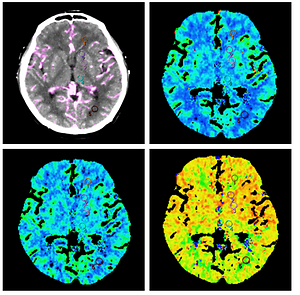Current issue
Archive
Manuscripts accepted
About the Journal
Editorial office
Editorial board
Section Editors
Abstracting and indexing
Subscription
Contact
Ethical standards and procedures
Most read articles
Instructions for authors
Article Processing Charge (APC)
Regulations of paying article processing charge (APC)
NEUROLOGY / CLINICAL RESEARCH
Effectiveness of low-tube current for reducing radiation dose in cerebral CT perfusion
1
Department of Radiology, Tianjin Huanhu Hospital, Tianjin Key Laboratory of Cerebral Vascular and Neurodegenerative Diseases, Tianjin, China
Submission date: 2019-10-16
Final revision date: 2020-04-13
Acceptance date: 2020-05-09
Online publication date: 2021-04-13
Corresponding author
Song Jin
Tianjin Huanhu Hospital, Tianjin Key Laboratory of Cerebral Vascular and Neurodegenerative Diseases
Tianjin Huanhu Hospital, Tianjin Key Laboratory of Cerebral Vascular and Neurodegenerative Diseases
KEYWORDS
TOPICS
ABSTRACT
Introduction:
This study aims to investigate the reduction of radiation dose in cerebral computed tomography (CT) perfusion by lower low-tube current.
Material and methods:
Two hundred patients, who underwent cerebral non-contrast CT and CT perfusion, were randomized to four groups according to tube current and contrast media (CM) concentration: group A (60 mAs, 320 mg I/ml), group B (60 mAs, 370 mg I/ml), group C (100 mAs, 320 mg I/ml), and group D (100 mAs, 370 mg I/ml). Among these four groups, the CT dose index (CTDIvol), dose length product (DLP) and effective dose (ED) were calculated. The quantitative image comparison included maximum enhancement, noise, signal-to-noise ratio (SNR), cerebral blood volume (CBV), cerebral blood flow (CBF), and mean transit time (MTT) from five regions of interests (ROIs).
Results:
Ranging from 100 mAs to 60 mAs, groups A and B achieved 40% lower CTDIvol, DLP and ED, compared with groups C and D. Both the maximum enhancement and noise of all ROIs were higher in groups A and B than in groups C and D (p < 0.05). The CBV values were higher in groups B and D than in groups A and C (p < 0.05). The image quality (IQ) of each group of perfusion maps met the requirements for imaging diagnosis.
Conclusions:
The reduction in tube current from 100 mAs to 60 mAs for cerebral CT perfusion led to a 40% reduction in radiation dose without sacrificing image quality.
This study aims to investigate the reduction of radiation dose in cerebral computed tomography (CT) perfusion by lower low-tube current.
Material and methods:
Two hundred patients, who underwent cerebral non-contrast CT and CT perfusion, were randomized to four groups according to tube current and contrast media (CM) concentration: group A (60 mAs, 320 mg I/ml), group B (60 mAs, 370 mg I/ml), group C (100 mAs, 320 mg I/ml), and group D (100 mAs, 370 mg I/ml). Among these four groups, the CT dose index (CTDIvol), dose length product (DLP) and effective dose (ED) were calculated. The quantitative image comparison included maximum enhancement, noise, signal-to-noise ratio (SNR), cerebral blood volume (CBV), cerebral blood flow (CBF), and mean transit time (MTT) from five regions of interests (ROIs).
Results:
Ranging from 100 mAs to 60 mAs, groups A and B achieved 40% lower CTDIvol, DLP and ED, compared with groups C and D. Both the maximum enhancement and noise of all ROIs were higher in groups A and B than in groups C and D (p < 0.05). The CBV values were higher in groups B and D than in groups A and C (p < 0.05). The image quality (IQ) of each group of perfusion maps met the requirements for imaging diagnosis.
Conclusions:
The reduction in tube current from 100 mAs to 60 mAs for cerebral CT perfusion led to a 40% reduction in radiation dose without sacrificing image quality.
We process personal data collected when visiting the website. The function of obtaining information about users and their behavior is carried out by voluntarily entered information in forms and saving cookies in end devices. Data, including cookies, are used to provide services, improve the user experience and to analyze the traffic in accordance with the Privacy policy. Data are also collected and processed by Google Analytics tool (more).
You can change cookies settings in your browser. Restricted use of cookies in the browser configuration may affect some functionalities of the website.
You can change cookies settings in your browser. Restricted use of cookies in the browser configuration may affect some functionalities of the website.



